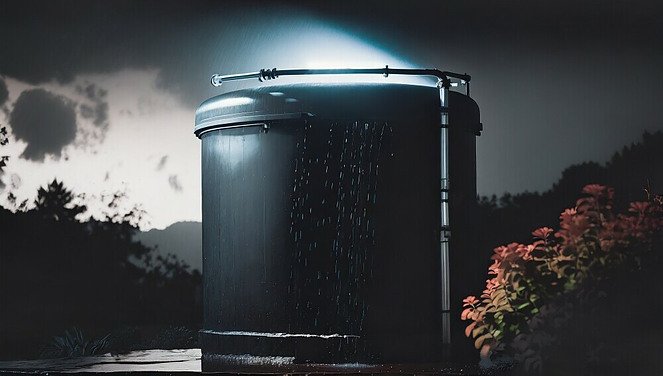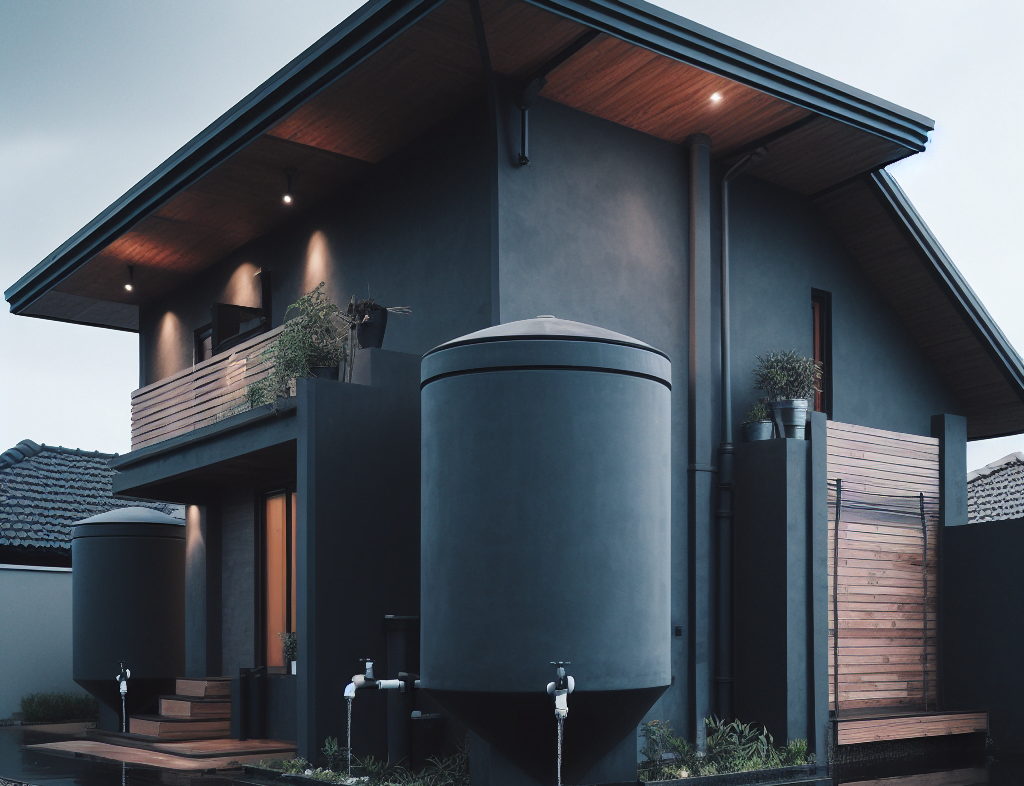In an era where society is becoming increasingly attuned to the critical importance of sustainable living, the concept of “How To Live Off The Grid With Rainwater Harvesting” is rapidly gaining traction. This comprehensive guide plumbs into the fundamental principles and significance of rainwater harvesting as a sustainable water source, offering invaluable insights into how individuals can embrace this eco-friendly practice. From its positive impact on the environment to the empowerment of personal independence, this guide navigates the essentials of incorporating rainwater harvesting into daily life, presenting a roadmap for a resilient and sustainable off-grid lifestyle.
The first steps to living off-grid with rainwater harvesting
1. Assess Your Property and Local Regulations: Evaluate the characteristics of your property, including size, layout, and type of structures. Check local regulations and building codes to ensure compliance with any restrictions or requirements related to rainwater harvesting systems.
2. Calculate Water Needs: Determine your household’s water consumption patterns to estimate the volume of water required. Consider seasonal variations and potential drought conditions to assess the system’s resilience.
3. Analyze Rainfall Patterns: Research historical rainfall data for your location to understand the availability of rainwater throughout the year. Identify peak rainfall periods and potential dry spells to optimize your system for efficiency.
4. Choose an Appropriate Collection Surface: Evaluate the roof area available for rainwater collection. Consider the material and condition of the roof, as well as any contaminants that may affect water quality.
5. Select an Efficient Filtration System: Choose appropriate filters and screens to prevent debris and contaminants from entering the harvesting system. Consider first flush diverters to discard the initial runoff that may contain pollutants.
6. Determine Storage Capacity

Calculate the storage capacity needed to meet your water demands during dry periods. Explore different storage options, such as tanks or cisterns, based on available space and budget.
7. Plan the Distribution System: Design a distribution system to convey harvested rainwater to various points of use. Consider gravity-fed systems, pumps, and plumbing requirements.
8. Investigate Purification Methods: Research water purification methods, especially if the harvested rainwater is intended for drinking. Explore options like UV sterilization, carbon filtration, or other treatment systems as needed.
9. Budget and Resources: Estimate the costs of implementing the rainwater harvesting system. Identify potential sources of funding or incentives that may support your off-grid living initiative.
10. Seek Professional Advice: Consult with experts, such as rainwater harvesting specialists or local environmental agencies, to ensure your system aligns with best practices and regulations.
By thoroughly assessing these factors, you lay the foundation for a well-informed and effective rainwater harvesting system, marking the initial step toward achieving a sustainable off-grid lifestyle.
Rainwater Harvesting vs. Well Water: Sustainable Water Solutions
Rainwater Harvesting – Positives
1. Sustainability: Rainwater harvesting is a sustainable solution that reduces dependence on traditional water sources. Capturing rainwater minimizes the strain on local water supplies and promotes ecological balance.
2. Cost-Effectiveness: Implementing a rainwater harvesting system can lead to significant cost savings over time. The initial investment is often outweighed by reduced water bills and, in some cases, potential government incentives for adopting eco-friendly practices.
3. Environmental Impact: Rainwater harvesting minimizes the environmental impact associated with well water extraction. It avoids the depletion of groundwater resources, reduces the need for energy-intensive pumping, and mitigates the risk of land subsidence.
4. Water Quality: Harvested rainwater is often higher quality than well water. The collection process involves natural filtration, and with appropriate filtration systems, it can be suitable for various purposes, including drinking.
5. Decentralization: The decentralized nature of rainwater harvesting empowers communities to manage their water resources locally. This decentralization enhances resilience to climate change, providing a more adaptable and sustainable approach.
Rainwater Harvesting – Negatives
1. Initial Cost: The installation of a rainwater harvesting system may involve an upfront cost, including the purchase of tanks, filtration systems, and plumbing modifications. However, these costs can be offset over time through reduced water bills.
2. Space Requirements: Adequate space for collecting and storing rainwater can be a challenge, especially in urban areas with limited space for large storage tanks. This limitation may affect the system’s overall capacity.
3. Reliance on Rainfall: Rainwater harvesting systems are dependent on rainfall, making them less reliable in arid regions or during extended periods of drought. This reliance on weather conditions can pose challenges in ensuring a consistent water supply.
Well Water – Positives

1. Consistent Supply: Wells provide a consistent and reliable water supply, unaffected by weather conditions. This makes well water a dependable source, particularly in regions with stable groundwater levels.
2. Year-Round Availability: Unlike rainwater harvesting, well water is available year-round, making it suitable for continuous water needs, such as agriculture or industrial processes that require a steady supply.
3. No Weather Dependency: Well water extraction is not reliant on weather patterns, making it a more dependable option in areas with unpredictable or irregular rainfall. This ensures a constant water source irrespective of climatic variations.
Well Water – Negatives
1. Environmental Impact: Extracting water from wells can lead to environmental issues, including the depletion of groundwater resources, land subsidence, and potential contamination of aquifers from human activities or natural processes.
2. Cost: Wells involve drilling and maintenance costs. Additionally, there may be ongoing energy expenses for pumping water to the surface, contributing to operational costs that can be higher than those associated with rainwater harvesting.
3. Regulatory Compliance: Well water extraction may be subject to strict regulations, permits, and compliance measures. Adhering to these regulatory requirements can pose challenges and additional costs for individuals or businesses.
In conclusion, both rainwater harvesting and wellwater extraction have their advantages and challenges. The choice between them depends on factors such as climate, local regulations, space availability, and the specific water needs of a community or individual. Sustainable water practices often involve a combination of these sources to maximize benefits while minimizing environmental impact.
Harnessing Historical Rainfall Data for Sustainable Water Practices
The significance of historical rainfall data becomes evident when embarking on a journey to live off the grid, especially with a focus on rainwater harvesting. This data serves as a foundational element for individuals seeking self-sufficiency in water supply and sustainable living practices, unveiling key aspects contributing to the success of off-grid living. Living off the grid necessitates careful planning for seasonal variations in rainfall, and historical data aids in understanding when to expect more abundant or scarce rainfall. This proactive approach enables off-grid dwellers to adjust their water usage accordingly, ensuring a sustainable water supply throughout the year, even in regions with distinct wet and dry seasons.
Alternative Rain Harvesting Collection Methods
Green Roofs or Living Roofs

Green roofs have vegetation and a growing medium, allowing them to absorb and store rainwater before gradually releasing it or directing it to storage.
Advantages: Provides insulation, reduces runoff, aesthetically pleasing.
Considerations: Requires structural considerations and professional installation.
Solar Panel Array
Separate solar panel arrays can be utilized to save the rainwater that falls onto them through traditional drain pipes.
Advantage: Efficient Dual-Purpose Use: Separate solar panel arrays can efficiently harvest and store rainwater by integrating traditional drain pipes into the system. This approach optimizes land use, generating clean energy while harnessing valuable rainwater resources.
Consideration: Design Precision: Thorough planning is crucial for seamlessly integrating solar panels with rainwater collection. Optimal layout, panel orientation, and drain pipe placement, along with structural considerations, demand precise design to ensure efficiency and durability.
Permeable Paving Systems
Permeable surfaces allow rainwater to pass through, and an underground storage system collects and stores the water.
Advantages: Reduces runoff, prevents flooding, dual-purpose for parking or walkways.
Considerations: Requires professional installation, upfront cost.
Rain Chains
Rain chains are decorative alternatives to traditional downspouts, guiding rainwater from the roof to the ground or a collection area.
Advantages: Aesthetically pleasing, can be integrated into landscaping.
Considerations: Limited capacity, may require additional storage.
A-Frame or Inverted Roof System
A-frames or inverted roofs guide rainwater into a central collection point for storage.
Advantages: Efficient for large roof areas, directs water to a specific point.
Considerations: Requires careful design and installation.
Conclusion
Emphasizing positive impacts and outlining steps for off-grid living empowers individuals to make informed choices. Highlighting diverse water sources and recognizing the significance of historical rainfall data underscores the importance of proactive planning for a resilient and sustainable lifestyle. In essence, the adaptability and resilience of rainwater harvesting pave the way for a successful and eco-conscious off-grid living experience.



